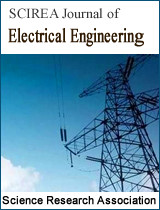Leaky wave cable with integrated adjacent antennas in office installation
DOI: 190 Downloads 14728 Views
Author(s)
Abstract
In this paper leaky wave cable with adjacent antenna elements operated on 3.5 GHz were evaluated by measurement of indoor installed setups. Novel radiation cable arrangements were compared with conventional LCX cable and hot spot antenna references. The power distribution in a 34 m long office environment was measured using a leaky coaxial cable (LCX) with several antennas having either low (-6,7 dB) or high (+2 dB) gains and compared with a conventional LCX and hot spot antenna solutions. Presented novel LCX cables provided a well distributed EM field along the corridor, presenting the best performance after 10 m distances from the transceiver and the field was 30 dB stronger than hot spot antenna`s at the end of the corridor. LCX cable performance was improved prominent 8 dB. The solution can be utilized in the construction of evenly distributed and reliable indoor coverages or power fields for energy harvesting with competitive implementation costs.
Keywords
leaky wave cable, antenna, indoor propagation
Cite this paper
S. Myllymäki,
Leaky wave cable with integrated adjacent antennas in office installation
, SCIREA Journal of Electrical Engineering.
Volume 4, Issue 3, June 2019 | PP. 63-72.
References
| [ 1 ] | S. Nie, G. R. MacCartney, S. Sun, and T. S. Rappaport, "72 GHz millimeter wave indoor measurements for wireless and backhaul communications," in Personal Indoor and Mobile Radio Communications (PIMRC), 2013 IEEE 24th International Symposium on,Sept 2013, pp. 2429-2433. |
| [ 2 ] | Z. Hang, R. Mayzus, S. Shu, M. Samimi, J. K. Schulz, Y. Azar, K. Wang, G. N. Wong, F. Gutierrez, and T. S. Rappaport, “28 GHz millimeter wave cellular communication measurements for ref ection and penetration loss in and around buildings in New York City,” in Proc. IEEE ICC, Jun. 2013, pp. 5163-5167. |
| [ 3 ] | B. Zhang, Z. Zhong, X. Zhou, K. Guan and R. He, "Path loss characteristics of indoor radio channels at 15 GHz," 2016 10th European Conference on Antennas and Propagation (EuCAP), Davos, 2016, pp. 1-5. |
| [ 4 ] | D. Lu and D. Rutledge, “Investigation of indoor radio channels from 2.4 GHz to 24 GHz,” in Proc. IEEE Antennas Propagation Soc. Int. Symp., vol. 2, pp. 134C137, June 2003 |
| [ 5 ] | P. Delogne, “Basic Mechanism of Tunnel Propagation”, Radio Science, Vol. 11, Iss. 4, pp. 295-303, April 1976. |
| [ 6 ] | S. T. Kim, K. J. Kim, Y. J. Yoon, and H. K. Park, “Research of Single Mode Radiation Leaky Coaxial Cable Used for Ultra Wide-band Communication”, International Conference on Communications, Circuits and Systems Proceedings, pp. 1261-1264, 25-28 June 2006. |
| [ 7 ] | J. Wei, C. Ji, Y. Yang, “An un-uniform periodic slotted leaky coaxial cable used in the specific wireless communication system of subway”, 10th International Symposium on Antennas, Propagation & EM Theory (ISAPE), Oct. 2012, pp. 1073-1076. |
| [ 8 ] | J. H. Wang, “Leaky Coaxial Cable with Adjustable Coupling Loss for Mobile Communications in Complex Environments”, IEEE Microwave and Wireless Components Letters, Vol. 11, Iss. 8, Aug. 2002, pp. 346-348. |
| [ 9 ] | Sesena-Osorio J. A., Aragon-Zavala A. Zaldıvar-Huerta I. E., and Castanon G. “Indoor propagation modelling for radiating cable systems in the frequency range of 900-2500 MHz” Progress In Electromagnetics Research B, Vol. 47, 241–262, 2013 |
| [ 10 ] | Higashino, T., K. Tsukamoto, and D. Komaki, “Radio on LCX as universal radio platform and its application,” PIERS Proceedings, 773–776, Xi’an, China, March 2010. |
| [ 11 ] | K. Inomata, T. Hirai, K. Sumi, K. Tanaka, ”Wide-area Surveillance Sensor with Leaky Coaxial Cables”, International Joint Conference SICE-ICASE, Oct. 2006, pp. 959-963. |
| [ 12 ] | C.-F. Huang, W.-T. Lee, “Radio channel analysis for a RFID system employing a leaky coaxial cable as a reader end”, 7th European Conference on Antennas and Propagation (EuCAP), Apr. 2013, pp. 2580-2583. |
| [ 13 ] | Stamopoulos, A. Aragon and S. R. Saunders, "Performance comparison of distributed antenna and radiating cable systems for cellular indoor environments in the DCS band," Twelfth International Conference on Antennas and Propagation, 2003 (ICAP 2003). (Conf. Publ. No. 491), 2003, pp. 771-774 vol.2. |
| [ 14 ] | S. Li, Y. Hou, T. Higashino and M. Okada, "A study of capacity of 4-by-4 MIMO channel using leaky coaxial cables for linear-cells," 2015 15th International Symposium on Communications and Information Technologies (ISCIT), Nara, 2015, pp. 253-256. |
| [ 15 ] | S. Tsukamoto, T. Maeda, M. Ariyoshi, Y. Hou, K. Kobayashi and T. Kumagai, "An experimental evaluation of 2 × 2 MIMO system using closely-spaced leaky coaxial cables," Signal and Information Processing Association Annual Summit and Conference (APSIPA), 2014 Asia-Pacific, Siem Reap, 2014, pp. 1-5. |
| [ 16 ] | Y. Wu, G. Zheng, A. Saleem and Y. P. Zhang, "An Experimental Study of MIMO Performance Using Leaky Coaxial Cables in a Tunnel," in IEEE Antennas and Wireless Propagation Letters, vol. 16, pp. 1663-1666, 2017. |
| [ 17 ] | A. Buffi, P. Nepa and B. Tellini, "Measurement system with leaky coaxial cables operating as distributed antennas for UHF-RFID readers," 2017 IEEE International Workshop on Measurement and Networking (M&N), Naples, 2017, pp. 1-5. |

